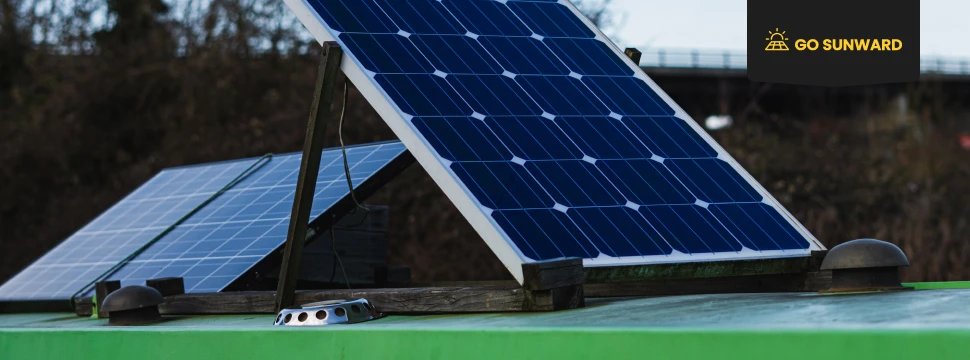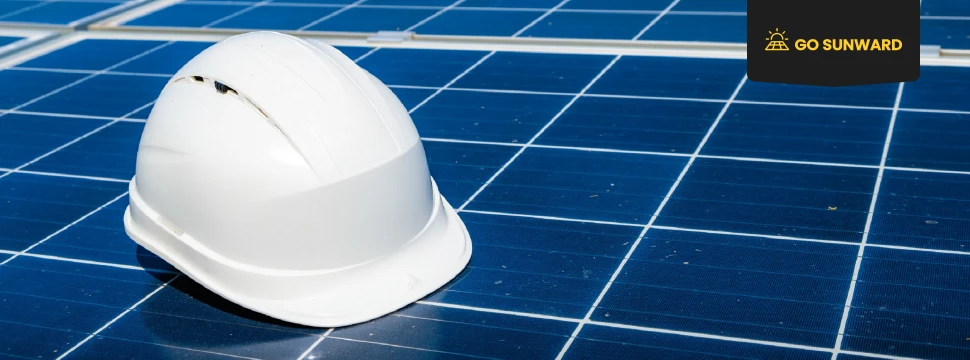Solar Panels For Your Home: Read This Before Buying
Solar panels have witnessed a remarkable surge in popularity as a sustainable energy solution for homeowners. This green technology not only offers numerous financial advantages but also contributes to a low-carbon, more sustainable future. However, before taking the leap into solar energy for the home, it’s crucial to be well-informed and make decisions that align with your specific needs and circumstances.
Solar panels have transitioned from a niche technology to a mainstream choice for homeowners seeking clean and renewable energy sources. The increasing awareness of environmental concerns, coupled with advancements in solar technology, has fueled this surge in popularity. And it’s clear that this trend is here to stay!
Given the long-term implications and financial investment involved in installing solar panels, making an informed decision is crucial. The choice of solar panels, installation company, financing options, and understanding of your home’s solar potential all play crucial roles in ensuring a successful solar journey. Educating yourself about the various aspects of solar energy allows you to make choices that align with your goals, budget, and environmental values.
In this article, we will guide you through the essential factors to consider before purchasing solar panels for your home, empowering you to make the right decisions for your unique circumstances.
What Do I Need To Know About Solar Panels?
Before we can assess whether solar panels are right for your home, we need to first delve into what solar panels are, how they work, and the different types on the market. Understanding the fundamentals of solar panels is the first step towards making an informed decision about integrating this technology into your home. You may also want to familiarise yourself with the top solar panel manufacturers in the USA.
Solar Photovoltaic (PV) Technology
Solar panels operate based on the fundamental principle of transforming sunlight into electricity. This process is achieved by utilizing photovoltaic cells, which serve as the core components of a solar panel. Photovoltaic cells, commonly referred to as solar cells, are semiconductor devices designed to absorb sunlight and generate direct current (DC) electricity.
Typically, a standard solar panel comprises multiple layers. The uppermost layer features a protective cover constructed from tempered glass, serving as a shield against external elements. Beneath this glass layer, an anti-reflective coating enhances light absorption. Directly below the coating, the photovoltaic cells are interconnected by conducting wires. These cells are responsible for capturing solar energy and converting it into electricity. The frame surrounding the solar panel provides both structural support and protection for the internal components.
The functioning of solar panels involves a process where photons from sunlight dislodge electrons from the atoms within the photovoltaic cells. This action results in the generation of an electric current, which is subsequently harnessed and converted into usable electricity.
Solar photovoltaic (PV) technology, a very popular renewable energy source, is widely employed in various settings, encompassing rooftop installations, solar farms and arrays, as well as smaller-scale setups.

The Different Types of Solar Panels For Your Home
There are three main types of solar PV panels: Monocrystalline, Polycrystalline, and Thin-Film Solar Panels. Each of these options offers a unique set of advantages and drawbacks, and selecting the right solar panel type for your installation depends on your preferences and the specific characteristics of your property.
Type 1: Monocrystalline Solar Panels Monocrystalline solar panels are crafted from single-crystal silicon, resulting in an exceptionally efficient and uniform structure. The production process involves precision slicing of cylindrical silicon ingots into thin wafers, which form the basis for individual solar PV cells. The high purity of monocrystalline silicon gives these panels a distinct edge in converting sunlight into electricity.
Characterized by their dark black hue and rounded edges, monocrystalline solar panels stand out visually. Their superior efficiency means they occupy less space to achieve the same power output, making them an excellent choice for installations with limited rooftop or ground area. However, it’s important to note that their manufacturing costs can translate into slightly higher prices.
Type 2: Polycrystalline Solar Panels
Polycrystalline solar panels feature multiple crystal structures of silicon, lending them a distinctive bluish tint. The production process involves melting raw silicon and casting it into molds to create square-shaped wafers. Polycrystalline panels are renowned for their cost-effectiveness, as they are easier and more economical to manufacture compared to monocrystalline panels.
While they may be slightly less efficient than their monocrystalline counterparts, ongoing technological advancements have narrowed the efficiency gap. Polycrystalline panels now offer good performance while remaining a popular choice for both residential and commercial installations due to their affordability and durability.
Type 3: Thin-Film Solar Panels Thin-film solar panels are fabricated using thin layers of semiconductor materials such as amorphous silicon, cadmium telluride, or copper indium gallium selenide (CIGS). This technology results in lightweight, flexible, and adaptable solar panels capable of integration into various surfaces, including those with curves or irregular shapes.
While thin-film panels exhibit lower efficiency compared to monocrystalline and polycrystalline panels, they excel in specific scenarios. They perform well in low-light conditions and withstand high temperatures. Their ease of integration makes them suitable for applications like building-integrated photovoltaics (BIPV), solar shingles, and other innovative solar designs.
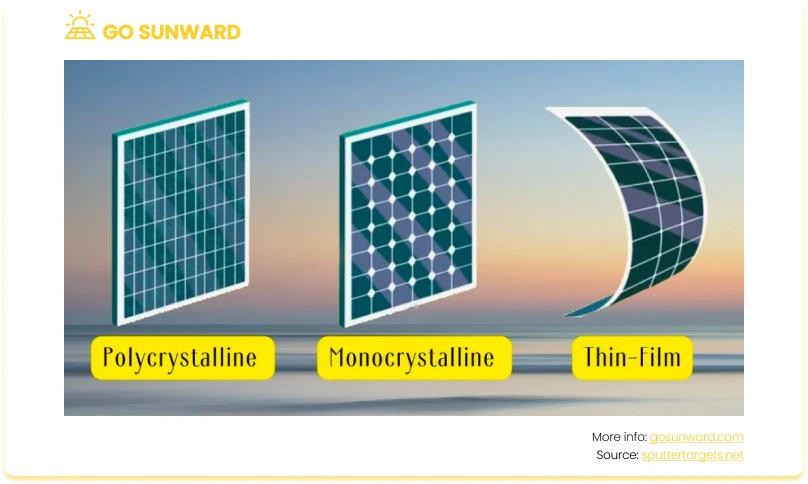
What Is The Solar Potential Of Your Home?
To embark on the journey toward harnessing solar energy for your home, it’s crucial to assess your property’s solar potential. This step is instrumental in determining the feasibility and efficiency of a solar panel system installation.
Determining The Solar Potential Of Your Location
Understanding the solar potential of your specific location is the foundation of a successful solar panel installation. Here’s what you need to consider:
- Sunlight Hours: Assess the average number of sunlight hours your area receives yearly. This information will help estimate the amount of solar energy your panels can generate.
- Shading: Identify potential sources of shading that could obstruct sunlight from reaching your solar panels. Trees, nearby buildings, or other obstructions can significantly impact the efficiency of your system.
- Climate: Consider the local climate and weather patterns. Areas with consistent sunshine will naturally yield more solar energy. However, even regions with less sun can still be viable for solar installations.
Sizing Your Solar Panel System Based On Energy Consumption
To ensure that your solar panel system meets your energy needs, you must accurately estimate your household’s electricity consumption. This involves:
- Reviewing Past Energy Bills: Examine your previous electricity bills to understand your typical energy usage throughout the year. Look for patterns in seasonal consumption.
- Energy-Efficiency Improvements: Before sizing your system, consider implementing energy-saving measures in your home to reduce overall consumption. This can lead to a smaller, more cost-effective solar array.
- Future Energy Needs: Anticipate any changes in your energy consumption. For instance, if you plan to add new appliances or electric vehicles, account for their energy requirements in your system size calculations.
Roof Suitability & Orientation
Your roof is the primary location for solar panel installation. Assessing its suitability and orientation is vital. Consider these factors:
- Structural Integrity: Ensure that your roof can support the weight of solar panels. Older roofs may require reinforcement.
- Orientation: The ideal roof for solar panels should face south or southwest in the Northern Hemisphere (north or northwest in the Southern Hemisphere) to maximize sunlight exposure. However, east and west-facing roofs can also be suitable, albeit with slightly lower efficiency.
- Tilt Angle: The tilt angle of your solar panels should align with your latitude for optimal energy capture. Adjustments can be made to accommodate varying roof pitches.
- Shade-Free Area: Identify sections of your roof that are free from shading throughout the day, as this is where solar panels should be installed for maximum efficiency.
By assessing the factors mentioned above, you’ll understand your home’s solar potential. This knowledge will guide you in making informed decisions about the size and placement of your solar panel system, ensuring it’s tailored to your unique circumstances and energy requirements.
Will I Save Money With Solar Panels At My Home?
When thinking about the installation of solar panels for your home, it’s imperative to consider the financials.
Upfront Costs vs. Long-Term Savings
- Upfront Investment: The initial cost of purchasing and installing solar panels can be substantial. This includes the cost of solar panels, inverters, mounting hardware, and labor for installation. However, it’s essential to view this expense as a long-term investment with potential for significant savings.
- Long-Term Savings: Solar panels generate electricity from sunlight, reducing your reliance on traditional utility-provided electricity. Over time, the energy savings can offset the upfront costs, leading to substantial long-term financial benefits. On average, in the United States, homeowners can expect a payback period ranging from 5 to 20 years.
- House Price Boost: Homes with solar panel installations generally have higher resale values than similar homes without solar panels. On average, buyers were willing to pay a premium of $15,000 or more for homes equipped with solar power systems, according to a study conducted by the U.S. Department of Energy’s Lawrence Berkeley National Laboratory. Read more about that here.
Is It Possible For Solar To Fully Power A House?
The simple answer is a resounding “yes.”
Solar energy can indeed be harnessed to power an entire household. In fact, some individuals have implemented extensive solar systems and solar arrays, allowing them to achieve complete energy independence. This approach aligns with ‘net-zero’ energy homes which aim to achieve a harmonious balance between energy production and consumption. These homes are designed and equipped to generate as much energy as they consume, effectively erasing their carbon footprint in terms of energy use.
Nonetheless, for many homeowners, retaining a connection to the local energy grid serves as a practical backup during cloudy days or extended inclement weather periods. Depending on your location, utility companies may levy a modest fixed charge to maintain this grid connection, ensuring continuous access to electricity.
In certain regions, solar installers can configure your solar panels to feed surplus energy back into the grid. In return, energy providers offer you credits that can be redeemed to access free electricity from the grid during nighttime hours or overcast days. This process is known as net metering.
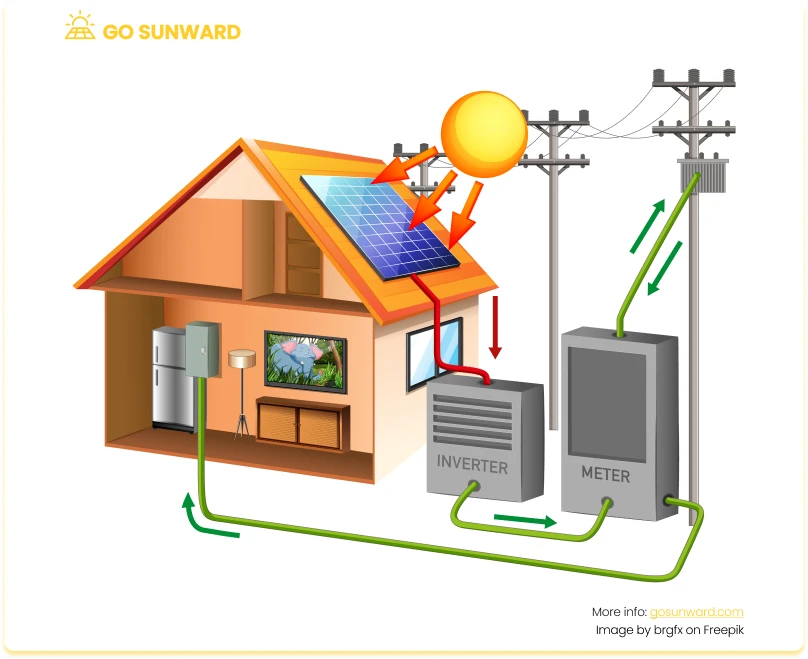
What Is On Offer To Help Me Go Solar At Home?
It is important to learn about the various incentives, financial options, and support available to facilitate your transition to solar energy. From tax credits to financing solutions, explore the resources that can make your solar journey more accessible and cost-effective.
Government Policy & Incentives
One of the primary drivers of the surge in solar panel installations in the United States is the support of various government incentives and policies. Federal, state, and local governments have introduced a range of initiatives to promote renewable energy sources, with a particular focus on solar power.
These incentives often come in the form of tax credits, rebates, feed-in tariffs and favorable financing options for homeowners who choose to invest in solar energy systems. Such financial incentives substantially lower the upfront costs associated with solar panel installation, making it more financially feasible for a broader range of homeowners.
Financing Options For Gong Solar At Home
When it comes to financing your solar panel system, there are several paths to consider:
Purchase: Opting to buy the solar panel system outright entails a larger initial investment, but it means you will own the system and enjoy the full financial benefits, including tax incentives and energy savings.
Lease: Leasing offers the opportunity to use the solar panel system without ownership. You pay a monthly fee to the leasing company, which also takes care of system maintenance. This option requires a lower upfront cost but may provide fewer financial benefits compared to ownership.
Power Purchase Agreements (PPAs): With a PPA, you don’t own the solar panel system, but you purchase the electricity it generates at a predetermined rate. PPAs can offer immediate savings on your electricity bills without the upfront cost of ownership.
It’s essential to evaluate these financing options carefully, considering how each aligns with your financial goals, budget, and long-term plans. Each option has its advantages and trade-offs, so select the one that best suits your specific circumstances and objectives.
What Are The Environmental Implications Of Going Solar?
Installing solar panels not only benefits your household financially but also has a positive environmental impact.
One of the most significant advantages of solar panels is their ability to reduce your carbon footprint. By generating clean and renewable energy from sunlight, you significantly decrease your reliance on fossil fuels for electricity. This reduction in greenhouse gas emissions helps combat climate change and contributes to a more sustainable future for our planet.

Solar panel manufacturing has environmental implications, primarily related to the production of raw materials and the energy used in the manufacturing process. However, many solar panel manufacturers are adopting sustainable practices, such as using recycled materials and renewable energy sources, to minimize their environmental impact.
Solar panels have a long lifespan, but eventually, they may need to be replaced. Proper disposal and recycling of old solar panels are essential to minimize waste. Fortunately, recycling programs for solar panels are becoming more widely available. Check with local recycling centers or manufacturers for guidance on disposing of old panels responsibly.
What Other Factors Do I Need To Consider When Installing Solar Panels At Home?
Beyond choosing the right solar panels and financing options, there are additional factors to consider for a successful solar panel installation in your home:
Energy Storage
If you aim to enhance energy independence and have power during outages, you may want to include energy storage solutions like batteries. They store excess solar energy for use when the sun isn’t shining, providing backup power and reducing reliance on the grid.
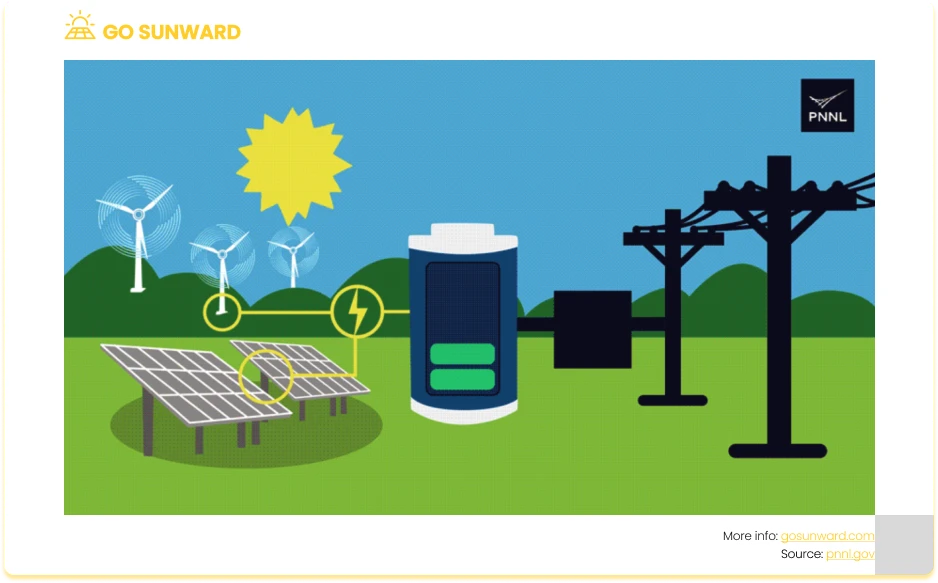
Grid-Connected vs. Off-Grid Systems
Determine whether you want a grid-connected or off-grid solar system. Grid-connected systems remain connected to the utility grid, allowing you to sell excess energy back to the grid. Off-grid systems operate independently and require energy storage for uninterrupted power.
Maximizing Self-Consumption
To make the most of your solar energy, consider ways to maximize self-consumption. Timing energy-intensive tasks during peak solar production hours and implementing energy management systems can help you use more of the electricity your panels generate, further reducing your reliance on grid power.
The Importance Of Energy Efficiency
Solar panels and energy efficiency go hand in hand. Solar energy production can offset the energy used by energy-efficient appliances and systems, reducing your overall energy bills and environmental impact.
Conduct a home energy audit to identify areas where energy is being wasted, such as inadequate insulation or drafts. Addressing these issues can result in significant energy savings. You can also upgrade to energy-efficient appliances, such as ENERGY STAR-rated devices, and use LED lighting to reduce electricity consumption.
How Do I Start The Process Of Going Solar At My Home?
So you want solar panels for your home, what are the next steps?
Selecting the right solar panel installer is a pivotal decision on your journey to harnessing the benefits of solar energy for your home. The installer you choose will not only determine the quality of the installation but also impact the long-term performance and reliability of your solar panel system.
Researching Reputable Installers
Selecting the best solar companies is a crucial step in ensuring a successful installation. To evaluate potential home solar panel installers, consider their qualifications carefully. Start by confirming that they hold the necessary licenses, certifications, and insurance for solar panel installation in your region. This not only assures their legitimacy but also ensures compliance with local regulations.
Experience is key in the solar industry, so seek installers with a proven track record of successful projects. An experienced company is better equipped to handle challenges, resulting in a smoother installation process. Choosing a local installer can provide advantages due to their familiarity with regional conditions, permitting processes, and potential incentives. Additionally, local installers offer quicker response times for maintenance or repairs, enhancing the overall experience.
Don’t forget to request references from potential installers and reach out to past customers. Conversations with those who have undergone similar installations can provide valuable insights into the installer’s reliability, workmanship, and commitment to customer satisfaction.
You can also explore the cheaper (more difficult and risky) option of installing a DIY solar system.
Getting Multiple Quotes
To ensure you receive the best value for your solar panel installation, it’s imperative to obtain custom quotes from multiple installers and carefully evaluate their offers. Solar panels are known to increase the value of a home, that’s why it’s important to let the best solar companies take care of your valuable instillation!
Reach out to several reputable installers in your area and request detailed quotes for your specific project. A comprehensive quote should encompass a breakdown of costs, equipment specifications, warranties, and an estimated timeline for installation.
Thoroughly review and compare the quotes you receive from different installers. Evaluate various factors, including the quality of the equipment, installation costs, warranty coverage, and the installer’s overall reputation. While price is an essential consideration, it should not be the sole determinant.
While cost-effectiveness is important, be cautious of offers that seem excessively low. In some instances, significantly lower prices may signify the use of subpar equipment or a compromise in workmanship quality. Balance affordability with quality when making your decision.
Can I Install Solar Panes For My Home Myself?
When it comes to harnessing installing solar panels for your home, you have two main paths to choose from: embarking on a DIY solar panel installation adventure or entrusting the task to professionals. Both options come with their own set of advantages and considerations. For more information on this, click here.
DIY Installation
Embarking on a DIY solar panel installation can be a rewarding endeavor for those who are technically inclined and eager to take on the challenge. DIY installations offer the potential for cost savings on labor, as you won’t need to hire professional installers. You have the flexibility to select and source your equipment, customizing the system to your preferences.
However, DIY installations also require a deep understanding of electrical systems and construction, as well as compliance with local building codes and regulations. If not done correctly, DIY installations can pose safety risks, and any mistakes may void warranties on your equipment. Additionally, DIY projects typically lack the experience and expertise that professional installers bring to the table, potentially leading to suboptimal performance or efficiency.
Professional Installation
Choosing professional solar panel installation provides several advantages, primarily in terms of expertise and peace of mind. Professional installers are trained and experienced in designing and installing solar panel systems to meet your specific needs and local requirements. They handle all the technical aspects, permitting, and paperwork, ensuring compliance with safety standards and regulations.
Professional installations typically come with warranties, safeguarding your investment and providing recourse in case of any issues. Furthermore, professional installers are well-versed in optimizing the system for maximum energy production, helping you reap the most benefits from your solar panels. While professional installation may involve additional upfront costs, it often results in a hassle-free and efficient solar panel system that will reliably generate clean energy for years to come.
Conclusion
As you consider adopting solar panels for your home, remember the key factors we’ve discussed. These include understanding panel types, financial considerations, choosing reputable installers, and enhancing energy efficiency.
By embracing solar energy, you can enjoy significant energy bill savings while making a positive environmental impact. Solar panels not only offer financial benefits but also the satisfaction of reducing your carbon footprint and contributing to a sustainable world.
This guide aims to empower homeowners, enabling them to make informed decisions about solar energy. It represents a step toward cleaner, renewable energy and a more sustainable future for you, your home, and the planet.

